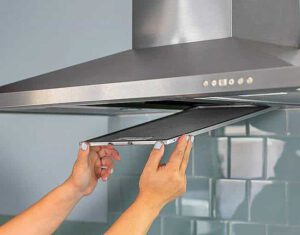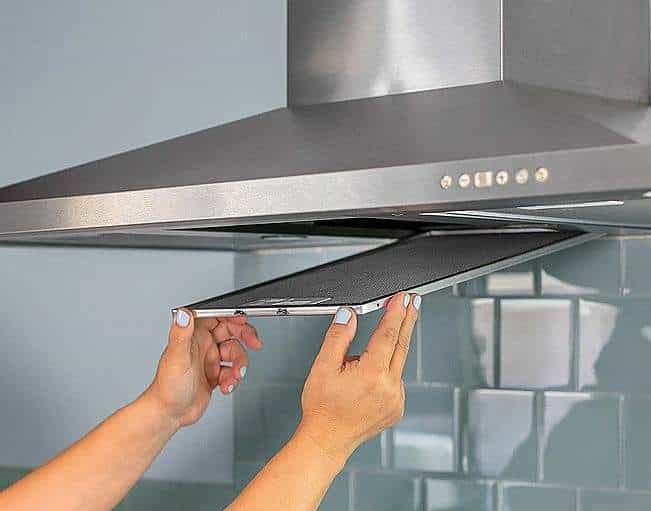Chimney Cleaning Charleston is an important home maintenance job that helps ensure the safe, efficient use of your fireplace. It can also help you save money on your energy bills.
Chimney sweeps can inspect your chimney from the bottom, looking through the flue cleanout, or by climbing on the roof and shining a flashlight. A dirty chimney can lead to expensive repairs and safety hazards.
Creosote is a black, tar-like substance that accumulates on the walls of your chimney and fireplace. When there’s too much creosote, it can restrict air flow, which can lead to a fire or make your chimney less efficient. It can also irritate your eyes, skin, and lungs.
Fortunately, there are many ways to minimize creosote buildup and keep it from becoming a serious problem. First, you should only burn well-seasoned wood that has been left to air-dry for six months or more. The more seasoned the wood, the less creosote it will produce. Second, you should use a chimney sweeping company to regularly clean your fireplace and chimney. This will remove the majority of creosote before it can become a serious problem.
Chimney sweeps can use brushes and creosote-removing powders to remove the bulk of this material from your chimney walls. In addition, they can also apply chemical treatments that break down and liquefy the glazed creosote deposits that are hard to remove. These products are generally applied with sprays or in powder form. If the glazed creosote has reached stage three, it’s likely too thick to be removed by a chimney brush and may require chemical treatment or a special rotary chain whip to break it apart.
The National Fire Protection Association recommends annual chimney cleaning to avoid significant creosote accumulation. This will help reduce your risk of chimney fires and improve your fireplace’s performance.
Homeowners can also reduce creosote buildup by using a fireplace cleaner log, which dissolves and loosens the grungy layer of creosote that collects on the top of their chimney after each wood fire. These chimney logs can be bought from most fireplace and hardware stores, and they usually work by absorbing and dissolving the greasy creosote before it can settle onto your flue tile or stainless steel chimney liner.
If you decide to use a chimney cleaning log, it’s important to follow the manufacturer’s directions and wear protective clothing. You should also open all the windows in your home and lay down plastic sheets to prevent soot and creosote from staining carpets and furniture. Before you start working on your chimney, it’s also a good idea to wear a face mask and rubber gloves to protect yourself from breathing in the fumes.
Debris
A chimney is designed to safely funnel sparks, fumes, and smoke out of the home. However, if a chimney isn’t cleaned regularly, it can be blocked by creosote, ash, and organic debris. When these materials accumulate inside a chimney, it creates a fire hazard and increases the risk that toxic carbon monoxide or fumes will seep into the living spaces. Chimneys are also a breeding ground for vermin, birds, and other pests.
Products like creosote logs can help keep a chimney clean, but they are not a substitute for professional cleaning services. Chimney cleaning removes the hardened, caked-on deposits of creosote and other material that can’t be removed with a brush or vacuum cleaner.
There are several ways to clean a chimney, but the most common involves climbing up on the roof with a ladder and using specialized equipment to scrape away creosote and other material from the inside of the chimney and flue. Most of these cleaning tools are designed to be used by professionals who have been trained to use them correctly. Professional chimney sweeps also use a variety of tools to protect the house from soot and debris during the cleaning process. This includes tarps and drop cloths to cover the floors and furniture in the fireplace area, as well as a specialized ash vacuum that can handle the large amount of waste material generated during the sweeping process.
Another way to prevent a mess is to trim branches that grow close to the chimney. This will make it harder for animals to enter the chimney and will help prevent rainwater from entering the chimney when it freezes in the winter. It is also a good idea to put a chimney cap on the chimney opening to keep debris from falling inside.
If a professional chimney sweep claims that debris found in your chimney shows that the liner is broken or has collapsed, get a second opinion. They may be trying to frighten you into buying a service that you don’t need. If they are using words like “carbon monoxide poisoning” or “house fire” in an attempt to scare you, be sure to find another company to do the work.
Carbon Monoxide
Carbon monoxide, or CO, is a colorless, odorless gas that can kill in high doses. It forms whenever fuels such as wood, gas, coal, kerosene, or oil burn. Normally, the chimney system funnels this toxic gas safely outside the home. However, if the chimney becomes blocked or faulty, carbon monoxide can back up into the house. This is a dangerous and deadly situation that can occur without warning, especially if quality battery-backed carbon monoxide detectors have not been installed.
When creosote buildup clogs the chimney flue, the gases from burning fires cannot escape. Instead, they will blow back into the house. These fumes can be incredibly dangerous to humans, pets, and plants. Carbon monoxide poisoning causes a wide range of symptoms, including headaches, fatigue, and nausea. If poisoning is severe, it can cause dizziness, weakness, confusion, shortness of breath, and loss of consciousness. Carbon monoxide is particularly dangerous to babies and elderly people. It attaches to fetal hemoglobin at a level that is 10% to 15% higher than in adults, making them more vulnerable.
The best way to prevent carbon monoxide poisoning is to schedule regular chimney cleanings and inspections. A professional chimney company can clean the areas of your fireplace that you can see and use specialized cameras to check for problems that you cannot. In addition, they can remove any leaves, twigs, or other debris that could be clogging the chimney or dryer vents and recommend repairs as necessary.
During the inspection, your chimney sweep can also install an insulated chimney liner in your fireplace to discourage creosote buildup and provide protection from toxic gases. The liners are made from durable materials and are designed to fit the chimney structure and the type of fuel being burned. In addition, the liner can be capped to block moisture and pests.
In addition to cleaning the visible parts of your chimney, a professional will use a high-powered vacuum cleaner to loosen and remove any creosote that has built up on the inside of the chimney. They may also remove any twigs, leaves, or other debris that has blown into the chimney from the surrounding yard.
Safety
Keeping your fireplace and chimney clean reduces the risk of fire. A fire in a dirty chimney can ignite creosite, a highly flammable black or dark brown residue that forms inside the flue lining and can quickly spread to other parts of your home. A clean chimney and fireplace can also help to maintain efficient heating, reducing your energy bills.
Chimney cleaning is a messy job, but it can be done safely and efficiently with the right equipment. The main tool that a chimney sweep will use is a brush, which looks like a giant bottle brush with metal bristles. Sweeps will wear a mask and goggles to protect themselves from the soot and chemicals. They will start from the top down and work through the nooks, crannies, and crevices in your chimney to make sure that all of the soot is removed. They will sweep the firebox and smoke shelf, if accessible. Then they will clean the chimney flue lining. They will also remove and replace the rain cap or animal guard. They will use a pulley rope system to operate the brush from both the roof and the fireplace. One person will hold the end of the rope attached to the brush while the other person below holds a rope that’s attached to the other side of the chimney brush. They will pull the ropes together to move the chimney brush up and down, scrubbing the flue walls.

